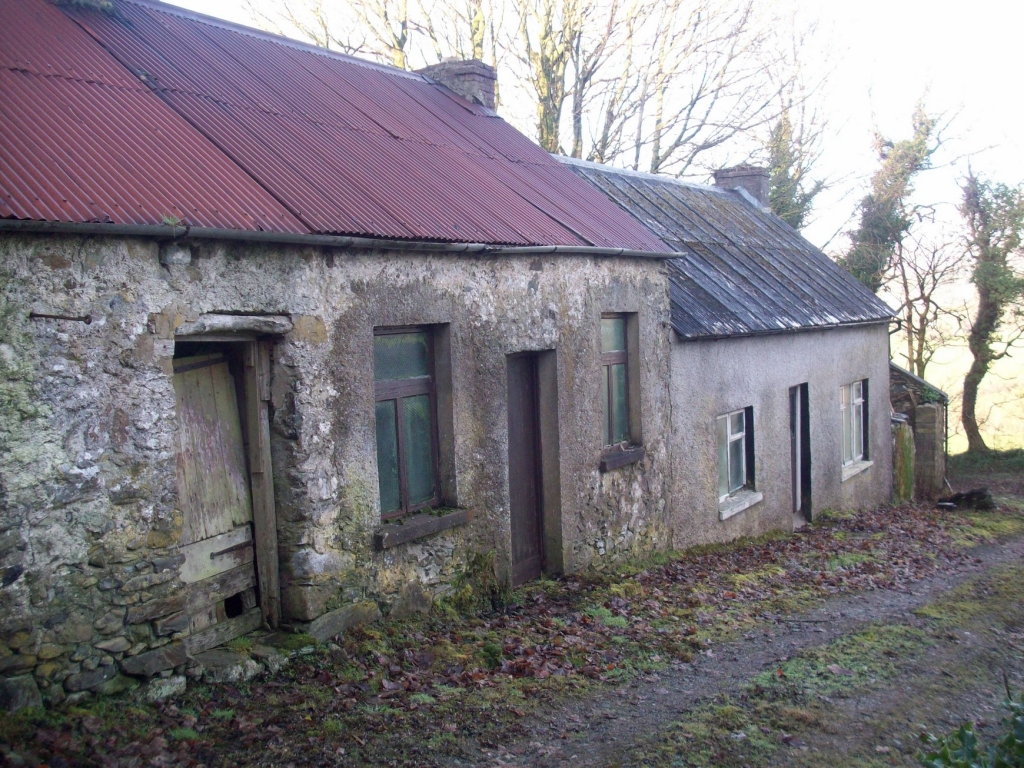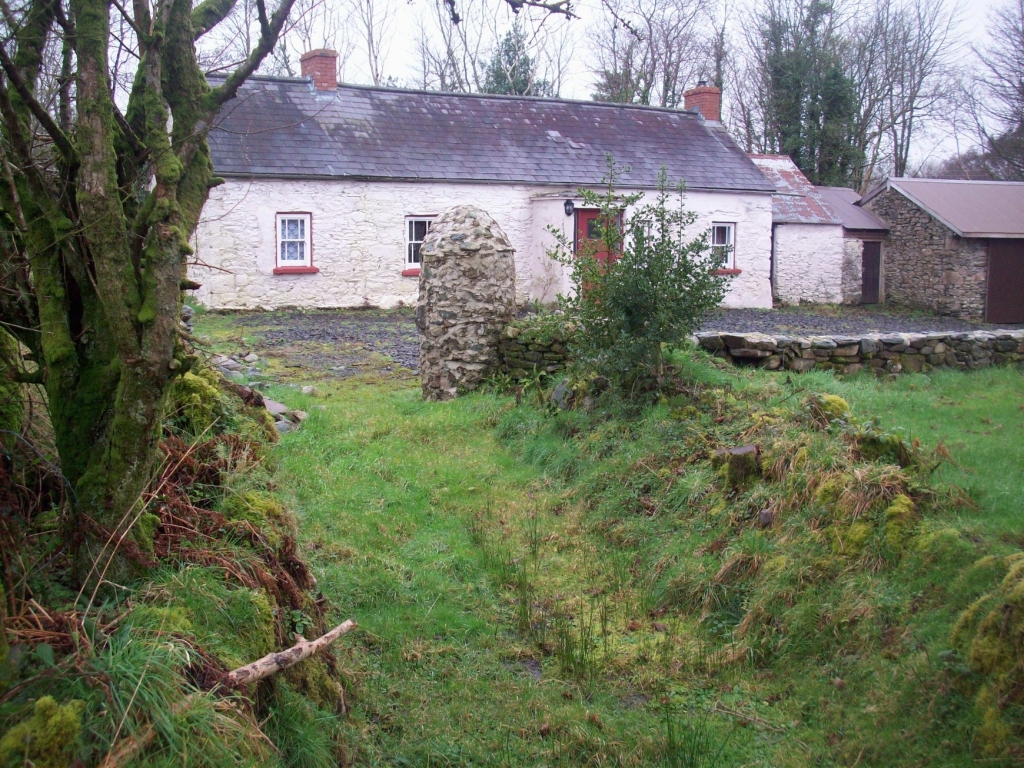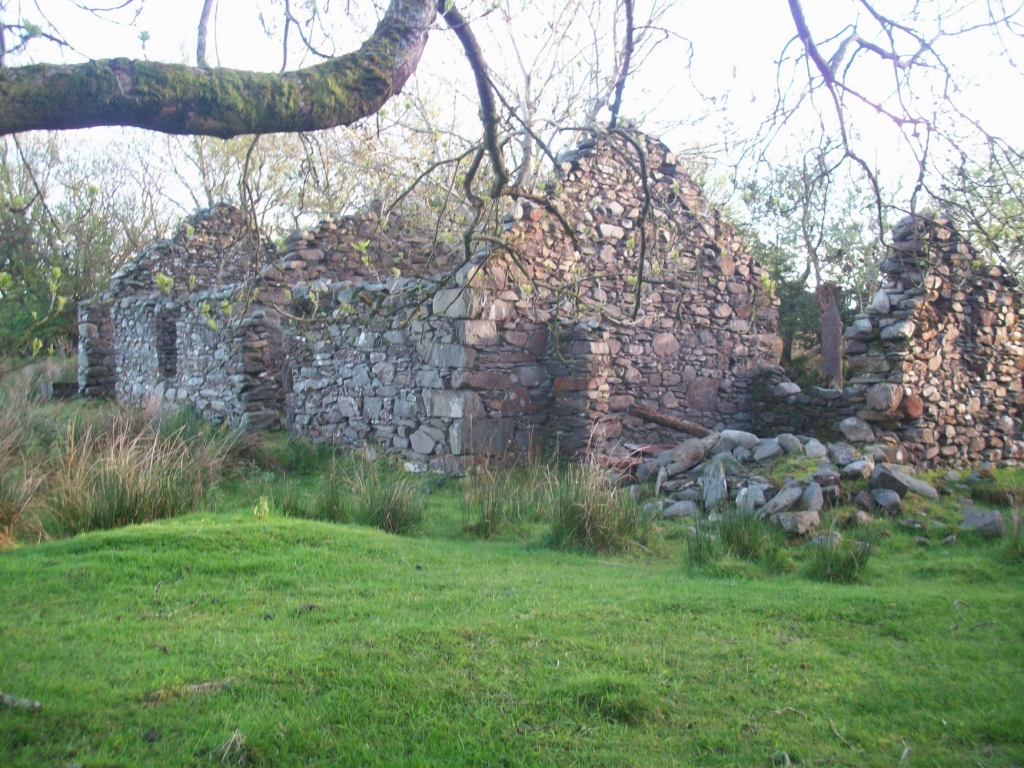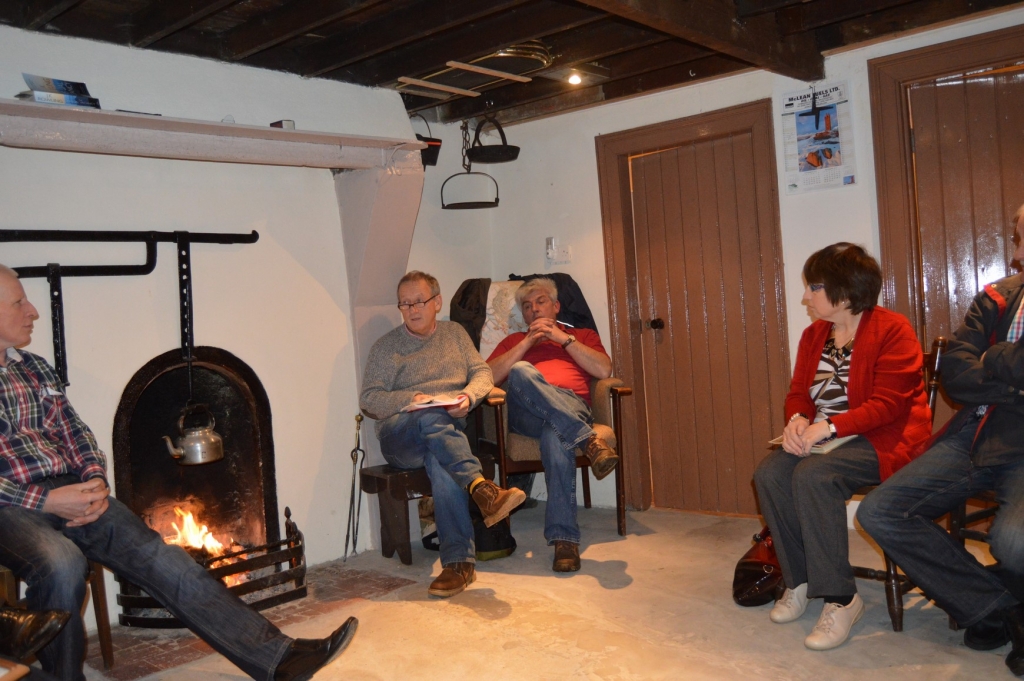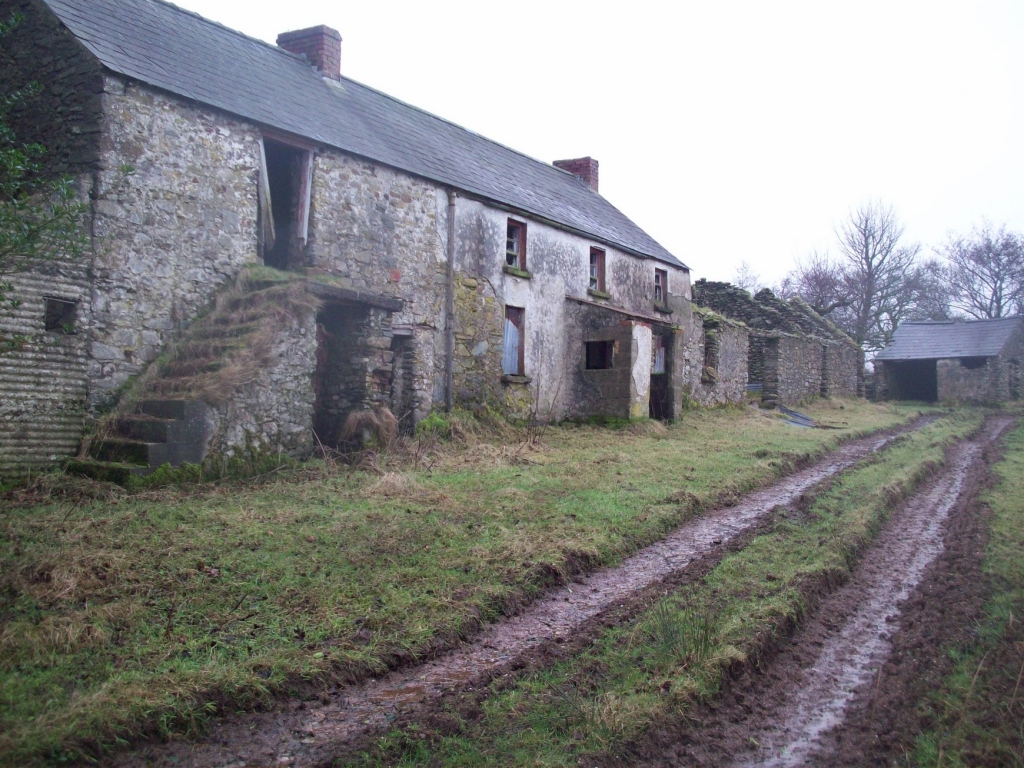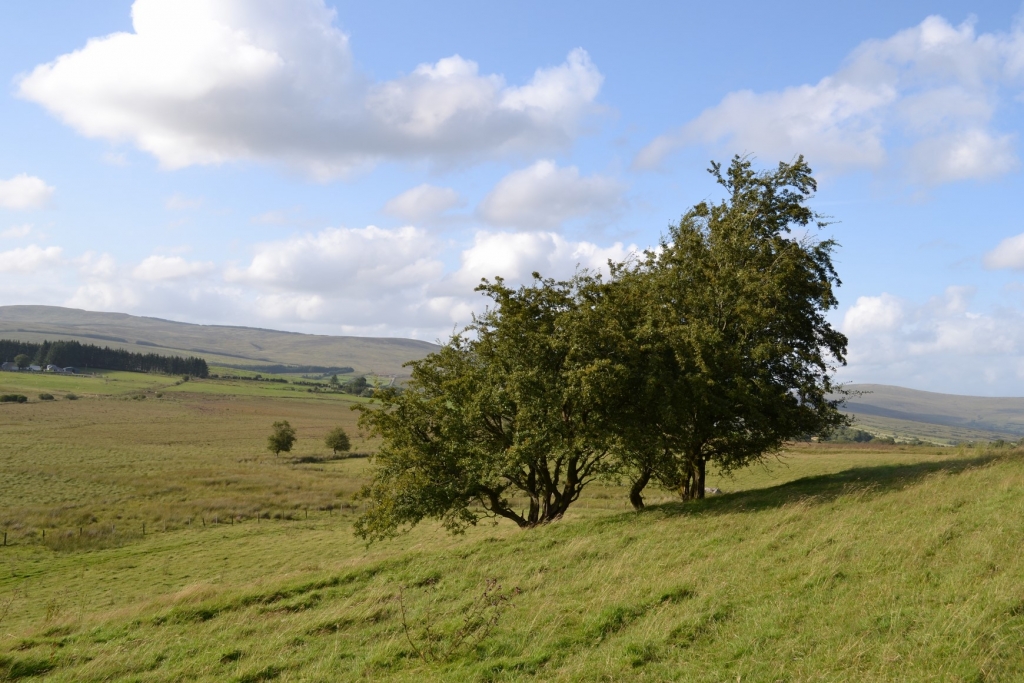Life and character of the people in the 1800`s.
“If those walls could only talk…… ”
The task of trying to find out what life was like in a place like the Sixtowns or indeed any other small rural area up to two hundred years back, is often made more difficult due to the fact that local history was mostly passed on orally and with very little of it actually written down. People had stories and they were exceptionally good orally, as they had lots of practice as they sat around firesides while on their `ceildhi`(visit) in neighbouring houses, recounting the memories and stories of their forefathers. However, oral history can be undependable at times in that the stories may die out with the tellers or they may be exaggerated or minimised by the next teller and so we tend to lose the accuracy of them. We are very fortunate in the Sixtowns, just like most areas of Derry and Tyrone in that we can refer to the Ordinance Survey Memoirs and the letters of John O`Donovan. These people came and did a comprehensive study of life in these counties in the early 1800`s. They talked to those individuals in the Sixtowns who, at that time would have been known to be very reliable sources of information on all aspects of life in the place.
What sort of houses did the people live in?
The start of the 1800`s was the period when there was huge upheaval for the people of the Sixtowns, as they saw the end of the Rundale system of agriculture, where people lived in clusters of houses or clachans as they were also called. The landlord began to break up the clachans as he moved his tenants out to the more outlying and previously uninhabited areas. This resulted in families being moved to more isolated farms, some well up into the mountains. Families who had lived closely together up to this point found themselves spread out over a wider area of previously uninhabited land. Larger holdings meant larger rents and for many of the poorer families this became a huge burden. The O.S Memoirs describe the people as they appeared to them;
Their very appearance bespeaks them as victims of rapacity and rack rent. They are indeed ground down by the insupportable burden, and all labour under a deficiency of capital. Their numerous families are quite adequate to the consumption of the farm`s produce, yet the crops must be hurried to market to meet the November rent and the summer`s provisions purchased at an advanced rate.
This would very much sum up the lot of the Sixtowns farmer for the most of the 19th century. Large families to feed, bad harvests and many other difficulties left many people on the point of starvation. Population peaked in the Sixtowns around the 1830`s, with many farms subdivided among sons so that they could try to support their families and with smaller holdings, life became more difficult and people became poorer. The potato blight in 1846 and 1847 really exasperated the situation more. There was massive emigration and the population dropped dramatically. It was not surprising therefore that these people would appear as such to those of the Ordinance Survey team who had just arrived in the area. It is difficult to see how rents and other debts could have been paid regularly in these circumstances.
In short their lives are a continual struggle for existence, and they live as one of themselves observed `by merely pinching the back and pinching the belly`
The houses are described thus;
Their dwelling consists of 2 divisions, the kitchen with its outshot, a projection in the wall beside the fire, in which outshot the parents sleep, and an inner apartment seldom having a fire, though the floor is earthen. As to the interior, the mean shabby furniture is huddled together in disorder and too often does little credit to the cleanliness of the housewife. The exterior is unsightly. It is generally in bad repair and particularly in Ballinascreen where the lime is dear, wants the cleanly, cheerful air that whitewashing alone can bestow; and as the cowhouse and barn are mostly under the same roof with the dwelling house, there is generally an accumulation of filth in front.
This type of house as described above, would have been common right up until the 1940`s. The problem with this type of house was that since the roof was thatched, it needed attention on an ongoing basis in order to look good. If the owner did not pay the required attention to it, then grass would begin to grow on the rotting thatch, giving it a most run down appearance. There was another problem with the whitewashed walls, if they were not maintained, in that a green fungus would grow on them giving them an awful rundown appearance. Lime was apparently dear and probably beyond the means to buy of a struggling tenant. We are also told that the houses in the upper Sixtowns glen;
Where it is not uncommon to meet with roofs covered with a thick growth of grass, with dirty doors and dungheaps to correspond. In the interior their comfort and cleanliness is of a similar character. Near the old church there are some houses a shade more comfortable, belonging to the Scottish settlers.
This does not mean that all the houses in the upper part of the Sixtowns were to be described as such but that there were quite a few which would belong to families who were finding the going tough compared to some of the better farms lower down the area. The houses were mostly one story cottages with thatched roofs and would have consisted of two rooms, namely the kitchen with its `outshot` bed which was a projection in the wall beside the fire in which the parents slept and another room which would seldom have a fire in it. Some of these survived right up until the 1970`s and even though the décor and furniture was modernised, these were basically the same houses as in that era.
Raking the fire
The hearth fires burned peat which was cut and dried in the bogs during the summer and the householders were experts in taking care of the fires. They would “ rake the fire” at bedtime each night to make sure that they were kept alive overnight for the morning use. This was skilfully done by gathering all the lighted coals into a small neat pile and covering them with ashes, ensuring that when they arose in the morning they could scrape back the ashes and build the fresh fire of turf on the still burning coals. The tongs were the tool used to tend to the fire and the family members would sit around the hearth at night talking and tending the fire.
Nightly pastimes.
There were no T.V`s in those days so the people had to make their own entertainment. Story telling and the art of conversation were attributes which were in plentiful supply. Neighbours called into each others houses on their `ceildhi` and family bonds were very strong as a result.
Survival of the fittest.
There was a strong sense of solidarity among the people as they shared the burden of poverty and sickness in those hard times which is difficult to find in modern society. It would be extremely difficult to explain to some young person, born in the 1990`s, what it was like to live in those conditions. There simply was very little to compare between these two eras. The cold, the damp and the cramped conditions of the families and the resulting sicknesses and disease which very often followed, are hard to relate to, when we think of the comforts of the modern house.
Furniture was of a very crude type, hammered together to fulfil a basic purpose with no emphasis on taste or style. Doors were never locked, for crime was almost non existent. There was simply little or nothing to steal. Most houses would have had some sort of byre built against the gable of the house and the manure, which was highly valued for growing crops, would usually be piled up on the street right in front of the door. This not only created a foul smell in the house but often affected the health of the young members of the family. Strange to say but the size of a farmer`s dung heap or `doughill` was looked on as a sign of his prosperity. The more cows he owned, then the bigger the `doughill`. One man from the upper part of the Sixtowns had a daughter who was to be married to a man from down the parish and he was being paid a visit by the prospective groom`s parents. Feeling that they were not very impressed by his humble cottage he speaks up, “Well, if you`re not impressed with the house, go and take a look at the `doughill` .”He saw it as a sign of his prosperity.
Agricultural schemes of land improvements during the 1970`s has obliterated the many ruins of these houses but many still survive today and serve as a memorial to the trials and the lives of their former occupiers. In fact there were still many of these thatched houses in existence in the area right up until the 1960`s.If we were to stop for a moment and look at the quality of the land and the size of the holdings, on which a farmer was supposed to bring up a family of up to ten or twelve children, we could then try to imagine what it must have been like to live in those times. There are still many patches on the sides of the mountains where you can see the traces of the lazy beds which produced the potatoes to feed whole families for the full year. It was in many cases potatoes for breakfast, lunch and supper. In many houses a pot of spuds was boiled in the morning and left by the fireside where the family members could feed from it at any stage of the day. Sometimes the mashed potatoes would be mixed with flour and milk and fried on the pan. This was called `fadge` and could be very tastey. Indeed, this would have been the case in many houses right up until the 1940`s although slightly supplemented with other farm produce.
State of health of the people.
The O.S. Memories report that the men of the locality were of good stature and were very active and athletic in the 1830`s. However, their general cleanliness left a lot to be desired. The women were said to be not of remarkable figure, while the young girls had “ a freshness of colour, a richness of complexion which the city belle would sigh for and sigh in vain.” The health of the people reported to be generally good all round. “The diseases of most frequent occurrence are inflammatory sore throat, pleurisy and low fever, arising most probably from the uncomfortable damp and imperfect ventilation of poorer dwellings, from severe labour without adequate nourishment, and lastly from want of cleanliness.” Once again this report alludes to the living conditions in the houses and the resulting illnesses which follow as well as the lack of nourishing food. The potato was in itself a adequately nourishing food but it needed to be complimented with milk or vegetables which, in many cases were not available to a lot of the people in amounts which would have been suffice.
The O.S.Memories are an invaluable source of insight into the lives of the people who lived in the Sixtowns in that era but since very little change took place right up into the early 1900`s, we can assume that a lot of this information could be applied to those later years of the 19th century as well.
These reports go on to describe the nature of the Scottish settlers of the time and how they differed from the native Irish in some respects.
The disposition of the Scotch is cold but not unsocial; their manners reserved but not impulsive; their affections mostly bounded by family circle but not irresponsive to the call of benevolence; their habits frugal, yet capable of softening occasionally into generous relaxation; and in cool perseverance, calculating prudence and command of temper they deserve to be taken as models by the Irish.
In contrast, of the Irish it reports that ;
The Irishman is distinguished by his fixed attachment to the soil of his native land. Though ever so poor and abject, he takes a deep interest in the tales of her ancient greatness and feels himself enobled in her bygone glories. Hence, if necessity forces him to emigrate, it is with violence to the best feelings of his nature.
It is noticeable that nothing negative is said about either peoples here as the comparisons are drawn between the two. It suggests that, just as it remains today, there is a harmony between these two peoples who come from different backgrounds and beliefs.
It emphasises the pain of enforced emigration among the Irish, the emotional attachment to the native soil as well as the importance of their ancient culture, whereas the “ heart of the settler is not bound by ties so endearing” .
A virtuous people of high morals.
The O.S.Memories goes on to mention temperance among the local people and tells us that drunkenness is not very widespread even though there are a lot of illegal stills and shebeens in the area. On morality, it praises the virtue of the young women and that in the previous 10 years only one child was born out of wedlock in the whole parish of Ballinascreen. In those days couples got married at a very young age and it would not have been uncommon for young people of 14 years of age to get married. People lived long lives too in places like the Sixtowns. A Patrick Walls from Owenreagh lived to be 101.
It was said that it would not have been uncommon to meet a man in his eighties still able to work with his sickle in the fields, so hardy were the people.
The spoken language of the time.
Of the language spoken in the area at the time it says
The English language has come into very general use, except in the most unfrequented recesses of the mountains where it has not yet supplanted the native tongue .
Those mountainous recesses would certainly include most of the Sixtowns. It also mentions both Catholic manuals as well as the Book of Common Prayer being written in Irish. Therefore, Irish would have been used and understood by most people in the area in the early 1800`s.Indeed the language survived in parts of the Sixtowns right into the 20th century.
Superstitions and fairies.
The people believed very strongly in the presence of fairies and they called them the `shigeogh` or the gentle people and they also believed that they lived in thorn bushes in Danish forts. They were also known as `luchre` and they were responsible for all sorts of mischievous activity and anything mysterious which happened in the locality. Certain people would have sworn to have seen these little people in various situations. Stories were told of men coming home from the fair on their horse and cart and seeing on the road in front of them, bags of gold.
One story was about such a man coming home along the road late at night on his horse and cart, after spending the day at the fair and what did he see lying on the road in front of him but a bag of coppers. He got down from the cart and gathered the bag of coppers up and put them in the cart and headed gleefully home. Not much farther up the road he saw a pile of silver in the middle of it. He jumped out again and dumped the coppers out of the bag and filled all the silver into it and hurried on his way. Again not very far up the road, what was lying on the road but a pile of gold coins. Out he jumps again and dumps the silver out of the bag and proceeds to greedily gather the gold into the bag. He could not wait until he got home to tell his poor wife the great news. When he arrived, he danced up the floor to where his wife was sitting spinning yarn on her spinning wheel. He caught hold of the spinning wheel and threw it out the door saying, “To hell with that thing, we won`t be needing it anymore, we are rich. Look what I have got here.” With that he dumped the contents out onto the kitchen floor but, alas, what was in the bag but horse manure.
Of course the only way to explain an embarrassing experience like that would be to blame the fairies rather than having had one too many in the pub before he headed for home. In some cases a wife who died in child birth would supposedly have been taken away by the fairies. There was another story about a man from Altayeskey who was cutting a tree down in the Moyola glen, when all of a sudden the tree began to bleed profusely. He immediately deemed that it was a fairy tree and he hurriedly gathered up the chippings and grafted them back onto the tree and used his handkercief to bind them to it. The next morning he found the same handkerchief tied to a tree at the back of his house.
Fairy Trees.
Of course while a considerable amount of people actually believed these stories, many told them as a means of entertainment for others around a fireside.
The superstition of the banshee had its origins probably in the stories of women having been taken away by the fairies. The people believed that the banshee would visit any family which had an `O` or `Mac` in it when a calamity or death of a member was imminent. They claimed that she was always dressed in an old Irish mantle.
There was also great beliefs in prophesies in those times. This was widespread in Ireland as a whole of course. One story told was that St. Patrick was crossing the Moyola river close to the old church when he stepped on a salmon and slipped falling into the river. Being naturally angry with the presence of the salmon in the water which he was trying to traverse, he was reputed to have scolded that no salmon would ever come up that river as far as the old church again. It certainly provided a good reason for uneducated locals why salmon were not to be found that far up the Moyola. These superstitions and prophesies tended to serve the purpose of explaining certain issues in the lives of the people which they found hard to understand. If something which happened could not be explained in any other way then the fairies seemed always to take the blame. If something else happened which would be inclined to happen on a regular basis or in the same circumstances, then there would always have to be some superstitious factor involved in it. Of course many of the old superstitions dated back to pagan beliefs and others were created to put a fright on people or it was merely part of the colourful art of ancient storytelling. Indeed some of these survive right up until today. Things like, breaking a mirror giving seven years of bad luck, or meeting a red haired woman on the road bringing bad luck to whatever you were doing at the time, were still believed by the old people up until recently in the area.

